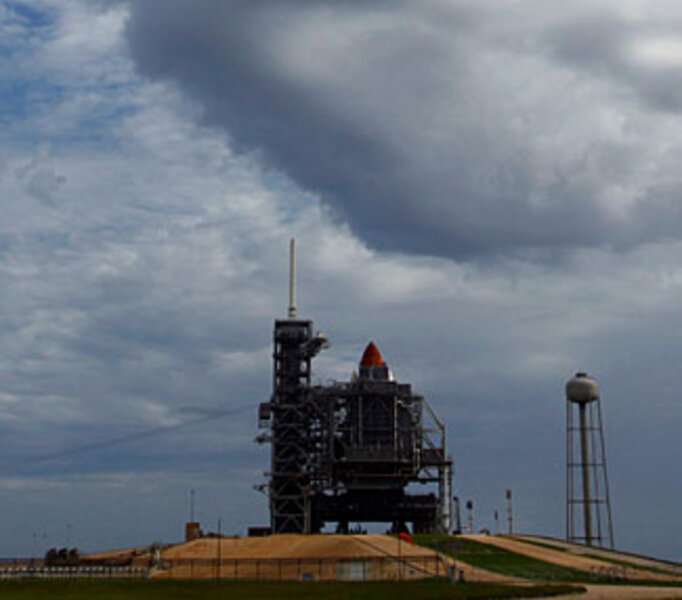Shuttle poised for 12-day visit at space station
Loading...
When it comes to launching space shuttles, the third time's a charm – weather permitting.
After two scrubbed launches plus the repairs needed to fix the problem, the National Aeronautics and Space Administration is getting set to launch the shuttle Endeavour and its seven-member crew to the International Space Station tomorrow evening.
Topping the agenda: delivering the final two pieces of Japan's laboratory module "Kibo" and conducting station maintenance, including the installation of six fresh batteries, each the size of a coffee table.
This mission "is going to be unbelievably challenging," says Mike Moses, launch integration manager at the Kennedy Space Center and chairman of the mission management team. Astronauts are scheduled to conduct five space-walks during the 12 days the shuttle it mated to the station. During many of period's activities, three robotic arms will be in play – one on the station, one on the shuttle, and one on Japan's lab module.
And for the 12 days of docking, the station will come as close as it ever will to feeling like Grand Central Station at rush hour, as the number of astronauts on board grows from six to 13.
Saturday's launch, set for 7:39 p.m. Eastern Daylight Time, will be the third attempt in the last month to send Endeavour on its way.
A persistent hydrogen leak stymied the first two attempts. The leak cropped up as technicians pumped frigid liquid hydrogen and liquid oxygen into the shuttle's external fuel tank. The leak appeared on the outside of the tank at a fixture that channels excess hydrogen through a hose to a flare stack beyond the launch pad, where it is burned off. The system is designed to prevent pressure inside the tank from getting too high as the tank is topped off. The gas becomes explosive when it mixes with air, so no one wants to see gas leaking anywhere near the orbiter.
Engineers figured out what caused the leak and fixed it. During the last week of June, the team tested the repair by filling the tank as if getting ready to launch. The leak failed to reappear.
Now, everyone is watching the weather. As of Friday afternoon, the forecast called for a 60 percent chance of weather conditions that would scrub the launch.
But everything else is set to go, Mr. Moses says.
As for the weather?
"I don't worry about things I can't control, and I certainly can't control the weather," he says. "People make fun of my last name being Moses and say I ought to be able to control the weather. But I just can't." He didn't say, however, whether anyone has offered him a wooden staff.
If weather prohibits a launch, the team will try again Sunday, with additional opportunities coming next Tuesday and Wednesday. The sky not only has to be lightning-free within 10 nautical miles of the launch pad, but clouds are a problem within 20 nautical miles should the orbiter have to abort its mission early enough in its ascent to the Kennedy Space Center.
-----
Follow us on Twitter.





